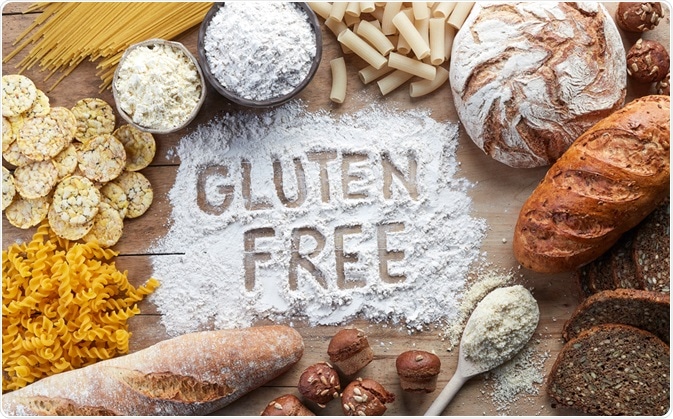Celiac disease is an autoimmune disease in which gluten ingestion results in damage to the lining of the small intestine. The damage to the small intestine leads to nutritional deficiencies and various disease conditions.

Image Credit: baibaz/Shutterstock.com
Celiac disease is found in genetically predisposed individuals when they consume grains such as wheat, oat, barley, etc. Celiac disease, if left untreated or undiagnosed, can lead to serious complications. Though the exact cause of celiac disease is unknown, certain genes have been held responsible for its development. The primary treatment for celiac disease is a gluten-free diet.
One in 100 people are affected by celiac disease worldwide; however, recent studies show an increase in celiac disease prevalence. Food processing is said to play a key role in the increased prevalence; evidence suggests that certain food additives can trigger autoimmune attacks, which may lead to celiac disease.
What are the symptoms of celiac disease?
Celiac disease is associated with around 200 symptoms, making it difficult to make an exact diagnosis. The symptoms may occur in the digestive system or other parts of the human body. There is also a possibility of being asymptomatic and still test positive for the disease when a blood test is done - the reason for this is yet to be deciphered.
The symptoms can differ between adults and children, with children being more prone to digestive symptoms. Some common symptoms of celiac disease are as follows:
- abdominal bloating and pain
- chronic diarrhea, constipation, vomiting
- pale, foul-smelling, or fatty stool
- iron-deficiency anemia
- weight loss
- fatigue
- bone or joint pain
- seizures or migraines
- missed menstrual periods
- canker sores
- itching and rash
Role of food additives in celiac disease
Food additives are substances added to improve the taste, safety, and appearance of food products. Food additives can be derived from animals, plants, minerals, and synthetic sources. There are three major classes of food additives - flavoring agents that improve taste or aroma, enzyme preparations, and other additives for preservation, coloring or sweetening.
According to the World Health Organization (WHO), food additives need to be safe and approved before use. Though food additives are generally safe, recent research shows a link between the increased prevalence of celiac disease and the consumption of certain food additives.
Food additives in the form of metal nanoparticles
Food additives in the form of metal nanoparticles affect the immune system and intestines by making the intestinal walls more active and responsive to gluten. This action of the metal nanoparticles is said to increase celiac disease risk, especially in genetically predisposed individuals. The mechanisms linking metallic nanoparticles with celiac disease are as follows:
- Impairment of the intestinal barrier may cause gluten peptides to permeate the submucosa and cause celiac disease.
- Effect on microbiota could also cause celiac disease; however, further studies are needed to prove this link.
- Interaction with the immune system- Nanoparticles can trigger hyperactivation of the immune system, which may be a possible cause for autoimmune disorders such as celiac disease.
Transglutaminase and celiac disease
Microbial Transglutaminase (mTGs) is a commonly used food additive. Microbial transglutaminase is used due to its ability to increase products' juiciness, water retention capacity, emulsifying properties, stability, and elasticity.
Recent studies show a possible link between microbial transglutaminase and celiac disease. Microbial transglutaminase can generate autoimmune response and can also increase the immunogenicity of gluten peptides.
Conclusion
Though studies point to a possible link between food additives and increased prevalence of celiac disease, more studies are required to ascertain the exact mechanism responsible for this pattern. Given the potential risk, experts recommend all foods processed with these food additives to be labeled appropriately. Consumers are also suggested to check labels to avoid being at risk of celiac disease.
Further Reading